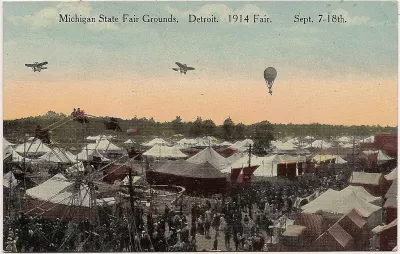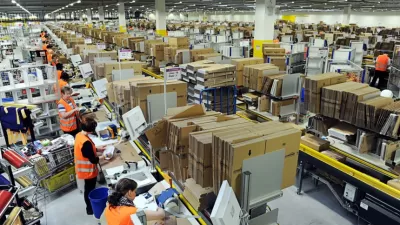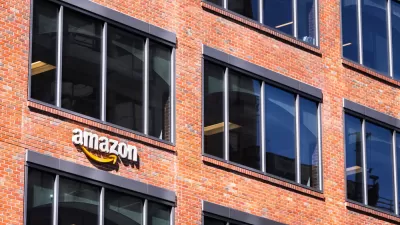Detroit officials have been trying to find a new life for the former site of the Michigan State Fair for a long time. Amazon will fill the void, according to a redevelopment proposal announced last week.

"After more than a decade of failed attempts, the old Michigan State Fairgrounds is finally being redeveloped with plans to build an Amazon distribution center," reports Adrienne Roberts.
"Under the proposal, Amazon would invest $400 million to build a 3.8-million-square-foot distribution center at the site, bringing at least 1,200 new jobs to the city," according to plans announced last week by Detroit Mayor Mike Duggan. Duggan was careful to note that Amazon is not receiving any special tax subsidies or public investments to facilitate the development.
There's a still real estate deal involved, according to Roberts: "The City of Detroit has agreed to sell the portion of the State Fairgrounds at Woodward Avenue and 8 Mile that it owns for $9 million to the real estate company The Sterling Group, founded by TCF Bank Executive Chairman Gary Torgow and now run by his adult children."
According to additional coverage of the news. about the proposed development, written by JC Reindl, Amazon will require the demolition of the site's historic fairground facilities to make way for its big investment.
"Detroit Mayor Mike Duggan said [on August 11] that most historic buildings at the old State Fairgrounds off 8 Mile will likely be razed to make way for the planned $400 million Amazon distribution center.
FULL STORY: Amazon looks to open $400-million distribution center at Michigan State Fairgrounds in Detroit

Maui's Vacation Rental Debate Turns Ugly
Verbal attacks, misinformation campaigns and fistfights plague a high-stakes debate to convert thousands of vacation rentals into long-term housing.

Planetizen Federal Action Tracker
A weekly monitor of how Trump’s orders and actions are impacting planners and planning in America.

In Urban Planning, AI Prompting Could be the New Design Thinking
Creativity has long been key to great urban design. What if we see AI as our new creative partner?

Cal Fire Chatbot Fails to Answer Basic Questions
An AI chatbot designed to provide information about wildfires can’t answer questions about evacuation orders, among other problems.

What Happens if Trump Kills Section 8?
The Trump admin aims to slash federal rental aid by nearly half and shift distribution to states. Experts warn this could spike homelessness and destabilize communities nationwide.

Sean Duffy Targets Rainbow Crosswalks in Road Safety Efforts
Despite evidence that colorful crosswalks actually improve intersection safety — and the lack of almost any crosswalks at all on the nation’s most dangerous arterial roads — U.S. Transportation Secretary Duffy is calling on states to remove them.
Urban Design for Planners 1: Software Tools
This six-course series explores essential urban design concepts using open source software and equips planners with the tools they need to participate fully in the urban design process.
Planning for Universal Design
Learn the tools for implementing Universal Design in planning regulations.
Appalachian Highlands Housing Partners
Gallatin County Department of Planning & Community Development
Heyer Gruel & Associates PA
Mpact (founded as Rail~Volution)
City of Camden Redevelopment Agency
City of Astoria
City of Portland
City of Laramie




























